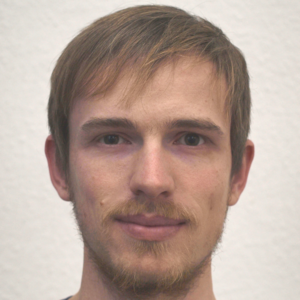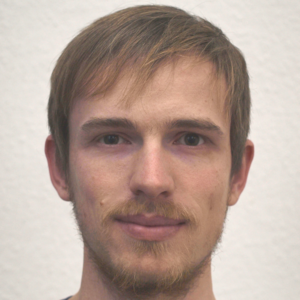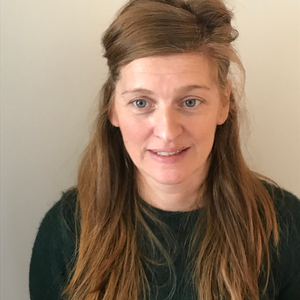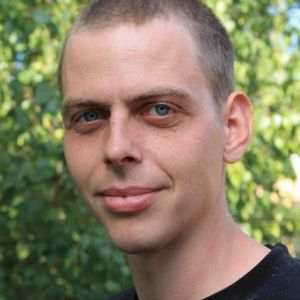Reports
Research Stay in Lyon by Mohamed Mossad (Oct 23)
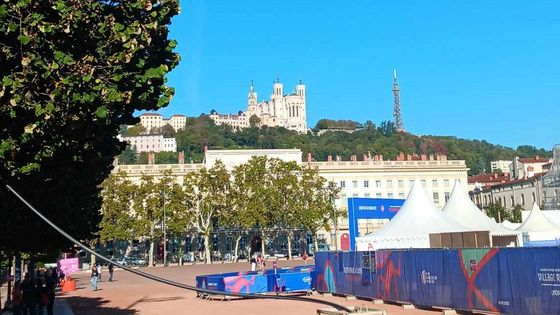
Exploring Atmospheric Dynamics
From the 1st of October and until the 14th, I had the opportunity to embark on a short research stay in Lyon, France, funded by the project TRR181 at École Centrale de Lyon. This period was not just a chance to collaborate and learn but also a stepping stone in my understanding of atmospheric dynamics, particularly regarding gravity wave (GW) spectra.
My time in Lyon was spent working alongside Raffaele Marino (scientist at CNRS, France) and the team at the Laboratory Mechanical Des Fluides Et D'acoustique (LMFA). The environment at LMFA was not only academically stimulating but also warmly welcoming, fostering both professional growth and personal connections.
One of the most enlightening aspects of this visit was the shift in my perspective on the processes which contribute to the canonical GW spectra. Discussions about turbulence and the scaling of gravity wave spectra opened my eyes to the broader physics underlying these phenomena. It was a transition from focusing merely on the slope of gravity wave spectra to understanding the vast, open-ended field of their scaling.
A highlight of my stay was exploring the relationship between the Froude number and statistics (kurtosis) of velocity and temperature fields. Although time constraints didn’t allow for its application on lidar data, the concepts presented were inspiring and thought-provoking.
Our work concentrated on validation of spectra from direct numerical simulations (DNS) against lidar data, scrutinizing how different wind regimes affect GW spectra. This involved a detailed comparison of integrated kinetic energy/scalar spectra with lidar data.
Leaving Lyon, I am armed with an array of studies and topics to delve into, especially regarding the comparison with DNS regimes. These studies are pivotal in enhancing our interpretation of GW data from lidar measurements. I am optimistic about the continuation of this collaboration in the future and the potential for significant findings.
Beyond the academic realm, Lyon itself proved to be a delightful experience. The city's transportation system was notably efficient which made commuting a breeze. The streets of Lyon are filled with friendly faces, many of them young students, also the 2023 Rugby World Cup was taking place there which added a lively and diverse vibe to the city. École Centrale de Lyon, nestled in this vibrant environment, struck me as an exceptional place for study and research, providing many chances to do sports as well.
I extend my deepest gratitude to the entire team at LMFA for their hospitality and support. Special thanks go to Rafaello Foldes and Fabio Feraco (IAP) for their invaluable help in answering my questions and assistance with data provision.
My research stay in Lyon was not only productive but also immensely rewarding. It has broadened my understanding and has surely impacted my approach to atmospheric science. I am grateful for this experience and hopeful that my contributions, though a fraction, have added value to our collective research endeavors.
A Memory of Pre-Pandemic Times and a Glimpse at the hopefully soon-to-be Future: My Visit at MIT and the AGU Fall Meeting 2021
With two successful talks, one on my research at the CRC181 and one on my science policy activities, I am more than happy with the received exposure and appreciation of our work.
Having been in the home office for a long time during the last two years I am sure everyone wonders: Remember how things were before the virus hit? And how things will be afterwards? I was asking myself the very same questions while having a travel grant available I had won mid 2020 from the DFG research unit MS-GWaves which was still sitting in the accounts waiting to be used. My visit had been planned for a long time but had also been delayed by the pandemic. So when the US started opening up to foreign visitors in late summer 2021 I decided to try to move forward with the plan we had been setting aside for so long. And despite the restrictions and insecurities linked to long distance travel I should very soon be rewarded. On November 8 I boarded an airplane to Cambridge, Massachusetts to visit the long research partner of out group, Prof. Triantaphyllos Akylas at the Massachusetts Institute of Technology.
Our former and ongoing research project with T. R. Akylas is concerned with the background-modulated wave-wave interaction of internal gravity waves. In a previous manuscript we had been able to show that wave modulation by a sheared mean flow can significantly inhibit the energy exchange through a near-resonant triadic interaction. However, the assumptions of Boussinesq dynamics and a constant stratification limited the applicability of the findings to the atmospheric context. We thus took on the task to extend the theory to semi-incompressible dynamics with both a variable stratification and sheared mean winds. Having derived the theory beforehand we used the 5 weeks together at MIT to explore the combined effects of the modulation by the wind and the stratification on the wave interaction. Interestingly the two modulation mechanisms can counteract each other opening up the possibility of strong interactions in regions with both changing stratification and strong shear. As the tropopause region typically exhibits these features it is of particular interest to be studied. A manuscript is now in preparation and planned to be submitted later this year.
Having already traveled to the US another possibility opened for me: the in-person attendance of the fall meeting of the American Geophysical Union in New Orleans. Traveling to conferences has always been one of my favorite parts of being a scientist. I am particular fond of getting to know places and people, exchanging ideas about our research, networking among peers and like-minded people and making friends throughout the world. The idea of attending a conference on site for the first time in two years was therefore especially tempting for me. Even though it came with the huge insecurity of sharing the venue with another 10,000 people during a pandemic the stringent health policies helped keeping the participants safe and the number of infections low.
With two successful talks, one on my research at the CRC181 and one on my science policy activities, I am more than happy with the received exposure and appreciation of our work. Fostering existing connections and forging new ones additionally rendered the conference experience as a very positive one. But maybe most importantly, I also realized what I had been missing out in the past months. Even though video conferences can account for the majority of the scientific collaboration it will not be able to replace the experience of and the human relationships associated to a person to person contact. Partnerships are build on these relationships and I am hoping that there will be a time soon where we can find a way to get back together. Personally I feel motivated to move forward and make progress in ways that I had not expected when I boarded that airplane on November 8. I would therefore like to particularly thank the CRC181, the research group MS-GWaves, the WilhelmHeraeus Visiting Professorship program and not at last Prof. Ulrich Achatz and Prof. Triantaphyllos Akylas for enabling this collaboration and the conference participation for me.
Internal Gravity Wave Interaction, Propagation, and Breaking in the Atmosphere
It has becomes clear that, even though the vertical propagation of gravity waves may be dominant for many atmospheric phenomena, the horizontal propagation cannot be neglected.
My name is Georg Sebastian and I am currently a postdoc in the TRRENERGYTRANSFERS, working in the project W1: “Gravity Wave Parameterization for the Atmosphere” under the supervision of Prof. Ulrich Achatz at the Goethe University Frankfurt am Main.
I had started out by studying the generation of internal gravity waves below the ocean surface by wind during my PhD under the supervision of Maren Walter. Recently, I moved to working on internal gravity waves in the atmosphere. Thus having studied both physical oceanography and atmospheric dynamics I am keen to investigate internal gravity waves in both environments considering various aspects of their dynamics.
The W1 Project is concerned with the lateral propagation of internal gravity waves in the atmosphere. In particular we employ the ray-tracing algorithm MS-GWaM to model sub-grid scale gravity waves including their transient propagation characteristics. That is, we model the lifetime of gravity waves including their interaction with the background – such as Doppler shifting or wave modulation by the mean flow.
In contrast, current state of the art parameterizations of gravity waves in atmospheric models assume that gravity waves propagate in the vertical instantaneously neglecting their finite vertical group velocity. Moreover these parameterizations do not allow for a horizontal propagation at all. However, it has becomes clear that, even though the vertical propagation of gravity waves may be dominant for many atmospheric phenomena, the horizontal propagation cannot be neglected. With the implementation of these effects in the numerical weather forecasting code ICON-NWP we hope to support that finding and gain new insight into the net effects and importance of the horizontal propagation.
Propagation is, however, only a part of a gravity wave’s life story. On its journey it can undergo a myriad of processes. Of special interest in various contexts are for instance the triad resonant interaction (TRI) and finally its breaking mechanisms.
Recently, we successfully described resonantly interacting gravity wave packets using a ray tracing algorithm utilizing weakly non-linear WBKJ theory in a Boussinesq environment including a slowly varying background flow. While interacting, the triad members are simultaneously modulated by a horizontal jet, leading to a reduction in energy exchange as the waves spectrally pass through the exact resonance conditions.
Moreover we are working on identifying instability mechanisms for strongly non-linear gravity waves in the vicinity of a mean-flow jet. Our theoretical study shows that in contrast to the upper jet edge the lower jet edge can sustain a novel type of modulational instability. New numerical evidence also shows that breaking mechanisms at the jet edges have distinct structures and might be associated to modulational instabilities or TRI (see Fig. 1 a and b).
This ongoing work is-among others–conducted in collaboration with Gergely Bölöni (DWD), Triantaphyllos Akylas (MIT, MA, USA), Mark Schlutow (FU Berlin, GER), and Ulrich Achatz (Goethe Universität Frankfurt).
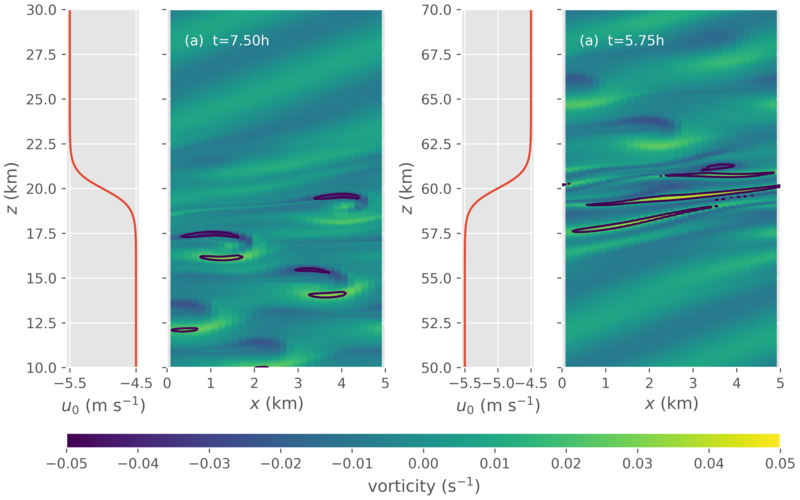
Parameterising Gravity Wave Effects in the Atmosphere
Without the gravity wave parameterisations the models do not simulate these large scale reversals so the inclusion of gravity wave parameterisations are essential to Earth system models for future climate change predictions.
I am a postdoctoral researcher working on adapting the IDEMIX internal gravity wave model for the atmosphere in subproject W1 together with Carsten Eden, Dirk Olbers, Matthäus Mai and Erich Becker.
Internal gravity waves in the atmosphere have a profound effect on the large-scale circulation in the atmosphere and contribute significantly to the mesoscale wind and temperature variance. Since their scales are too small to be represented in general circulation models, their effects must be included via sub-grid scale parameterisations. Most climate and numerical weather prediction models now include some form of gravity wave parameterisation in order to accurately simulate large-scale middle-atmospheric phenomena such as the Brewer-Dobson circulation, the seasonal zonal-mean wind reversal and the quasi-biennial oscillation. Without the gravity wave parameterisations the models do not simulate these large scale reversals so the inclusion of gravity wave parameterisations are essential to Earth system models for future climate change predictions.
However current gravity wave parameterisations have a major drawback in that they use much too simplified physics to determine the feedback of the waves on the large scale flow. They are steady state and use separate parameterisations for terrain-generated and convectively-generated gravity waves. The main goal of this project is to include more sophisticated physics in atmospheric gravity wave parameterisations by use of IDEMIX which simulates the evolution in time of the wave field, its energy exchange interaction with the background flow (shown in Figure 1) and can accommodate multiple wave sources at once, allowing for wave-wave interactions.
IDEMIX can easily incorporate the effect of critical layers which occur frequently in the atmosphere since the gravity waves have similar phase speeds to the background flow, typically tens of metres per second. A dynamically-determined dissipation is calculated when the waves break, to keep the wave field within convective stability limits. The wave energetics from IDEMIX are used to calculate the gravity wave drag which feeds back onto the largescale circulation to either accelerate or decelerate it. Compared to traditional parameterisations which tend to provide the drag around the mesopause, IDEMIX exhibits a better vertical distribution of gravity wave drag throughout the middle atmosphere which is more fitting to observations. The basic IDEMIX for the atmosphere is now being implemented into the ICON-A component of the ICON Earth System Model.
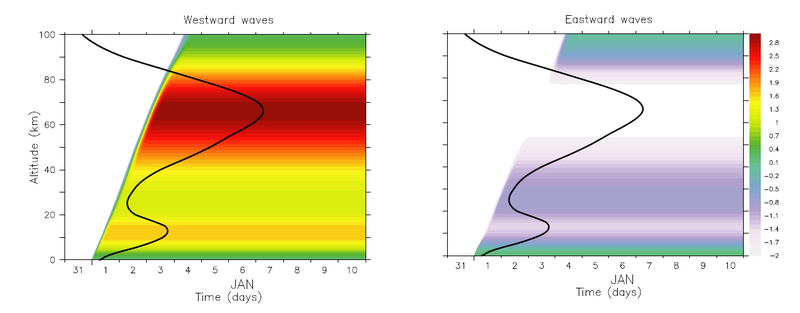
Gravity Wave Parameterisation for the Atmosphere
The focus of W1 will be on the wave-mean flow interactions, i.e. the energy deposition and the gravity wave drag.
Gravity waves are an important part of the energy cycle of the atmosphere. They exchange momentum and energy with the mean flow due to wave breaking and wave refraction. In the subproject W1, we propose a new, energetically consistent gravity wave parameterisation, based on the radiative transfer equation for a field of waves.
Conventional parameterisations for gravity waves base on the assumption of stationary mean flow and a superposition of monochromatic waves launched at a certain level. The new scheme describes the wave field continuously in physical and wave number space. The IDEMIX concept (previously used for mixing by internal waves in the ocean) enables to simplify the radiative transfer equation with a few assumptions (propagation into a particular azimuth direction, single column approximation). The focus of W1 will be on the wave-mean flow interactions, i.e. the energy deposition and the gravity wave drag. This drag contributes strongly to drive the residual circulation in the middle atmosphere and to induce the quasi-biennial oscillation in the tropical stratosphere.
My part of the project is the derivation of realistic force functions of gravity waves (spatially and temporally continuous). These functions will contain gravity waves caused by flow over rough terrain, and convection and frontal activity. Another task will be the derivation of a vertical diffusion coefficient, which considers dynamical instability criterion. At last, this parameterisation has to be implemented in KMCM (Kühlungsborn Mechanistic general Circulation Model) and compared with the conventional schemes routinely used in KMCM and ICON.
